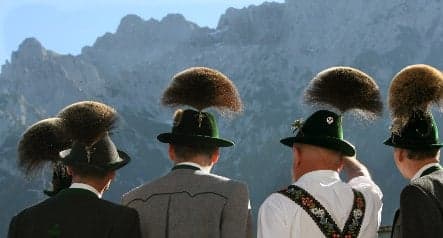Bavarian tops list of best loved German dialects

The Bavarian dialect is Germany’s best-loved accent, according to a new poll from monthly magazine Daheim in Deutschland.
The lilting southern Bayerisch German accent was favoured by 44 percent of those surveyed.
The mushy-sounding Palatine German, spoken in the Pfalz region, was the least-liked accent of the survey’s 14 general dialects.
Clipped and dry Plattdeutsch, or Low German, spoken in the northeast of the country, took second place. The brusque Berlin accent was third most popular, followed by the unmistakable Swabian dialect from the German state of Baden-Württemberg.
Some 62 percent of those polled agreed that dialects enrich the German language, though only 32 percent said that the countries myriad accent strains don’t cause communication problems – though more than half of these were younger than 30.
Though grumbling about other dialects may seem like a favorite German pastime, 78 percent of those polled said speaking a regional dialect was a “positive” thing and 54 percent said they’d like to see and hear these dialects on television too.
1. Bavarian, 44 percent
2. Low German, 32 percent
3. Berliner, 29 percent
4. Swabian, 25 percent
5. Saxonian, 20 percent
6. Rhine Franconian, 19 percent
7. Hessian, 16 percent
8. Ruhr German, 13 percent
9. Franconian, 12 percent
10. Westphalian, 9 percent
11 Badisch, 9 percent
12. Palatine German, 7 percent
13. prefers no dialect, 4 percent
Comments
See Also
The lilting southern Bayerisch German accent was favoured by 44 percent of those surveyed.
The mushy-sounding Palatine German, spoken in the Pfalz region, was the least-liked accent of the survey’s 14 general dialects.
Clipped and dry Plattdeutsch, or Low German, spoken in the northeast of the country, took second place. The brusque Berlin accent was third most popular, followed by the unmistakable Swabian dialect from the German state of Baden-Württemberg.
Some 62 percent of those polled agreed that dialects enrich the German language, though only 32 percent said that the countries myriad accent strains don’t cause communication problems – though more than half of these were younger than 30.
Though grumbling about other dialects may seem like a favorite German pastime, 78 percent of those polled said speaking a regional dialect was a “positive” thing and 54 percent said they’d like to see and hear these dialects on television too.
1. Bavarian, 44 percent
2. Low German, 32 percent
3. Berliner, 29 percent
4. Swabian, 25 percent
5. Saxonian, 20 percent
6. Rhine Franconian, 19 percent
7. Hessian, 16 percent
8. Ruhr German, 13 percent
9. Franconian, 12 percent
10. Westphalian, 9 percent
11 Badisch, 9 percent
12. Palatine German, 7 percent
13. prefers no dialect, 4 percent
Join the conversation in our comments section below. Share your own views and experience and if you have a question or suggestion for our journalists then email us at [email protected].
Please keep comments civil, constructive and on topic – and make sure to read our terms of use before getting involved.
Please log in here to leave a comment.